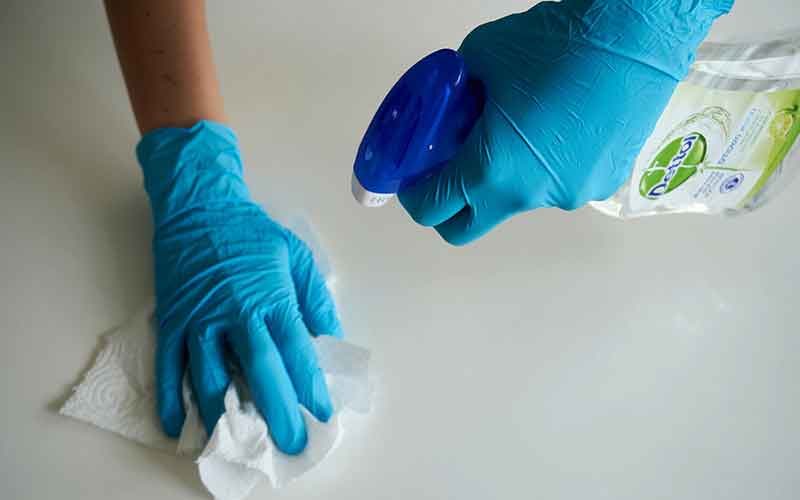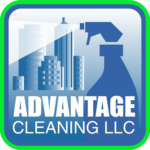With all of the recent safety precautions surrounding the pandemic, words like cleaning and sanitizing are said often regarding keeping a facility prepared and protected so it can remain operating. This article is to help clarify what the difference is between cleaning vs sanitizing, how to do them effectively and safely and when you do them.
How Is Cleaning Defined?
To clean something means to remove all of the visible contaminations on the surface, including dirt, spills, food particles, dust, etc., by washing, brushing, or wiping the area. This process removes dirt on the surface level and does not kill germs but can help reduce their numbers. This is expected to be the first step in the cleansing process.
The cleaning process generally utilizes the following items:
- Soaps
- Detergents
- Vacuums
- Dusters
- Degreasers
- Glass Cleaners
How Is Sanitizing Defined?
Sanitizing removes germs from surfaces, treating a cleaned surface to effectively destroy microorganisms, like bacteria, of public health significance and reduces risk of spreading infection. You cannot sanitize a dirty surface. Cleaning always comes first! Although sanitizing reduces the growth of harmful bacteria, it does not kill all of the viruses on a surface.
Sanitizing is meant to be used as a preventative measure and is an extremely important practice in restaurants, schools, corporate offices, and hospitals. It should be done frequently on high touch surfaces like door knobs, light switches, phones, etc.
The sanitizing process can be done with the following items:
- Bleach
- Ammonia
- Iodine
- Disinfecting Wipes
Cleaning VS Sanitizing
First you remove the dirt with cleaning
Then you kill germs with sanitizing
Now that we’ve established the difference between cleaning vs sanitizing, let’s how they’re done properly, how they work together and when is the appropriate time to do each.
How To Clean
Now that we’ve discussed the difference between cleaning vs sanitizing, let’s discuss how to do these two things correctly. In many of our articles we cover specific ways of cleaning depending on the type of facility (such as school cleaning and gym cleaning) or area within a facility (such as a bathroom or a kitchen) so we won’t go too in-depth here about how to clean. We can really break cleaning down into main steps.
Follow these steps:
- Wash your hands
- Remove debris from the surface. It’s important to remove all dirt, dust and trash from a surface by wiping, sweeping, dusting, etc, before wetting the surface to avoid creating mud.
- Wet the surface. Use soap and water or a stronger cleaning agent, if necessary, to breakdown dirt particles stuck to the surface.
- Wipe and scrub the surface. Use a towel, brush, sponge, mop or various other cleaning tools to remove remove the dirt from the surface.
- Rinse the surface. Remove all soap, dirt and water after the cleaning process. Rinsing may be running water over the surface or using a clean towel and clean water.
- Wash your hands

How Often Should You Clean?
Any shared public spaces in your facility should be cleaned at least once daily. You may want to clean even more frequently if your shared space has any of these issues:
- Is a high traffic area, with a large number of people.
- Is poorly ventilated.
- Does not provide access to hand-washing or hand sanitizer.
- Is occupied by people at increased risk for severe illness from COVID-19.
How To Sanitize
To sanitize, choose a product that states its use explicitly as a sanitizer. Some cleaning products are a combination of cleaner and sanitizer. Other products, like laundry sanitizer, can reduce the number of germs from fabrics and clothing. Appliances like dishwashers, washing machines, and steam cleaners have “sanitize” settings that can lower the number of germs even further.
Follow these steps (after cleaning):
- Make sure you’re using a product approved by the EPA for killing germs. Here’s a link to the EPA’s list >
- Read product label instructions and follow safety precautions carefully
- Wash hands before and after
- Open doors and windows and use fans to increase ventilation
- Wear a mask and gloves
- Sanitize the surface with a disinfectant product, follow safety guidelines carefully. Rinse the sanitizer if needed per the product’s directions.
- Allow the surface to air dry for a minimum of 30 seconds to a minute to allow the sanitizer to work.

How Often Should You sanitize?
Clean high-touch surfaces at least once a day or as often as determined is necessary. Examples of high-touch surfaces include pens, counters, shopping carts, tables, doorknobs, light switches, handles, stair rails, elevator buttons, desks, keyboards, phones, toilets, faucets, and sinks.
Sanitizing schedules may vary depending on your facility and the number of guests in your establishment. The following are some suggested moments when sanitizing should take place:
- Once a day at minimum
- At a higher frequency during cold and flu seasons
- At a higher frequency during a virus outbreak
- Whenever bodily fluids are on a surface
In Conclusion
As you can see, there’s a big difference between cleaning vs sanitizing but you can not sanitize without cleaning first. It’s also important to consider that sanitizing often requires chemicals that are dangerous to your health so it’s best to only sanitize when necessary. Remember that areas with high bacteria, exposure to food or that are touched by skin often are the typical areas that need to be sanitized on a routine basis.



